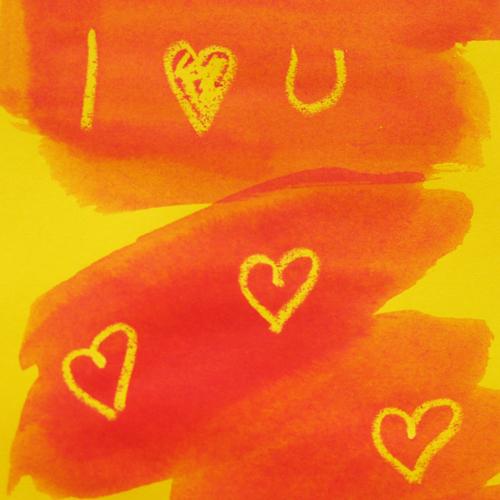When this paper meets a basic substance it turns bright red… so, why wouldn’t it make the perfect Valentine’s Day experiment? Just add your favorite Valentine shapes to this acid/base experiment and you will end up with the most amazing scientific Valentines you’ve ever seen!

Here's What You'll Need
-
Goldenrod Paper
-
Cotton balls
-
Squirt bottle
-
Scissors
-
Ammonia-water solution (household ammonia from the grocery store like glass cleaner)
-
Candle or yellow crayon
-
Human heart picture
-
All purpose gloves
-
Safety glasses
Experiment
Goldenrod Valentine Doily
- Fold one piece of goldenrod paper in half and cut out a heart shape from the center fold.
- Fold the heart shape 2-3 times more and cut out smaller heart shapes or other patterns of your choice, then unfold the paper.
- Lay the heart flat on a tray with 4-5 cm (1.5-2 in) rims (ie: baking pan, plastic container, or dinner plates work well) to contain the ammonia solution.
- Dip a cotton ball in the ammonia solution and swab the doily from side to side to turn the paper from yellow to red. You may also use a squirt bottle for precision saturation or write a disappearing message like LOVE or BE MINE. You can also simply pour a small amount of the ammonia directly onto the doily.
- After your message fades away, use a candle or yellow crayon to write a “secret message” inside the heart doily and follow step four to make the message appear again. It’s Valentine magic (I mean science)!
- Finally share the love with a family member, friend, or “person of interest” and they will be yours forever!
Goldenrod Human Heart Cut-out
- Find a basic drawing or picture of the human heart and trace the image onto a piece of goldenrod paper.
- Use a permanent thin point magic marker to outline the parts of the heart… like the aorta, coronary arteries, or the vena cava superior.
- Lay the human heart cut-out flat on a tray with 4-5 cm (1.5-2 in) rims (ie: baking pan, plastic container, or dinner plates work well) to avoid spilling the ammonia solution.
- Dip a cotton ball in the ammonia solution and swab the specific parts of the heart as read off by a teacher in class to help with memorization.
- Write the names of the heart parts next to the parts themselves to complete the diagram.
- By the end of the activity all parts of the heart should be the color red with the correct names listed next to the parts. Now that’s a healthy heart!
How Does It Work?
The ammonia on the cotton ball is a base and causes the dye in the special goldenrod paper to change color. You probably noticed that the red color fades over time and the paper eventually changes back to its original yellow color. Why? The carbon dioxide gas in the air we breathe is slightly on the acidic side of the pH scale. The carbon dioxide reacts with the ammonia on the paper to produce ammonium carbonate, which changes the pH of the paper to neutral (roughly a pH of 7) and the dye changes back to yellow. If you use a stronger base like washing soda, the red message will not disappear with just the carbon dioxide in the air. You will need to use a stronger acid like lemon juice or vinegar to change it from red to yellow. You can also use goldenrod paper as inexpensive pH paper to classify safe household products as being either acidic or basic.
